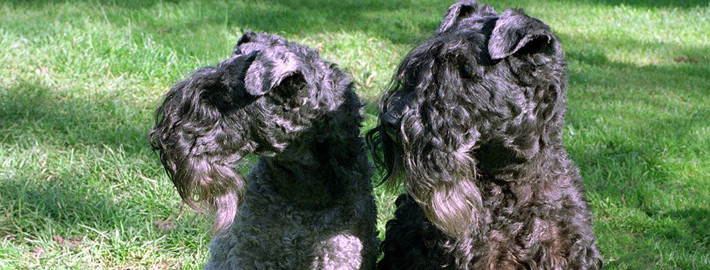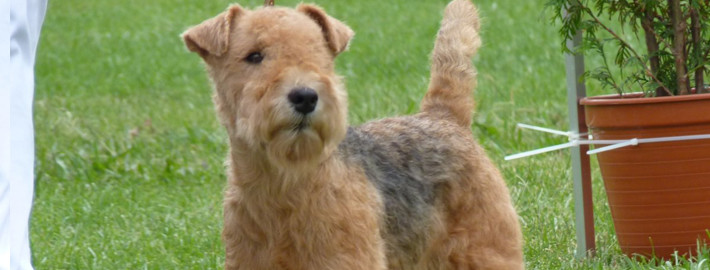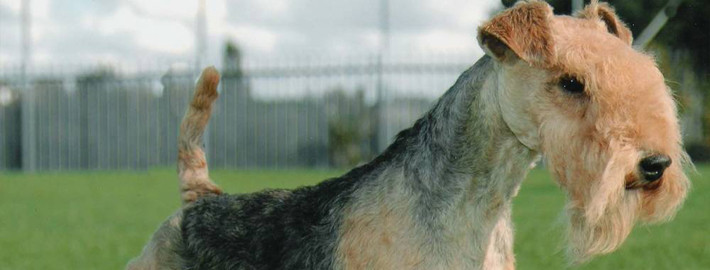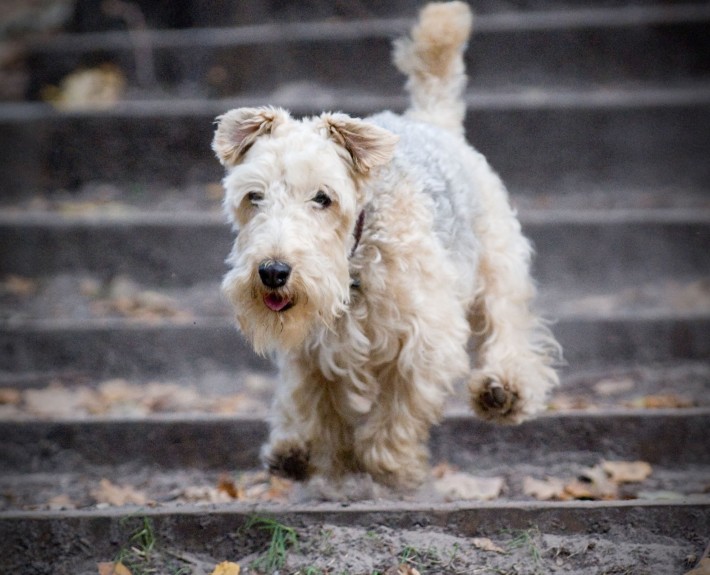What makes the Lakeland Terrier Unique?
The Lakeland terrier is a rather small dog of short-backed, square proportion with a sturdy, workmanlike build. Its legs are fairly long, enabling it to run at good speed and traverse the rugged shale terrain of its native mountain countryside. Its gait is smooth and ground-covering, with good reach and drive. Its body is deep and narrow, allowing it to squeeze through small passages after its quarry. Its expression reflects its mood, ranging from intense to gay or impish. Its double coat consists of a soft undercoat and a hard, wiry outer coat. The spunky Lakeland makes the most of every day, always busy investigating, playing and, if it really gets its wish, hunting, running and chasing. Given daily exercise in a safe area, it settles down in the home and makes an entertaining and endearing house pet. It is reserved with strangers and usually aggressive toward other dogs and small animals. Clever, independent and stubborn, it can be mischievous. It is nonetheless sensitive and must be trained with patience as well as a sense of humor.
Breed Groups
Page Contents
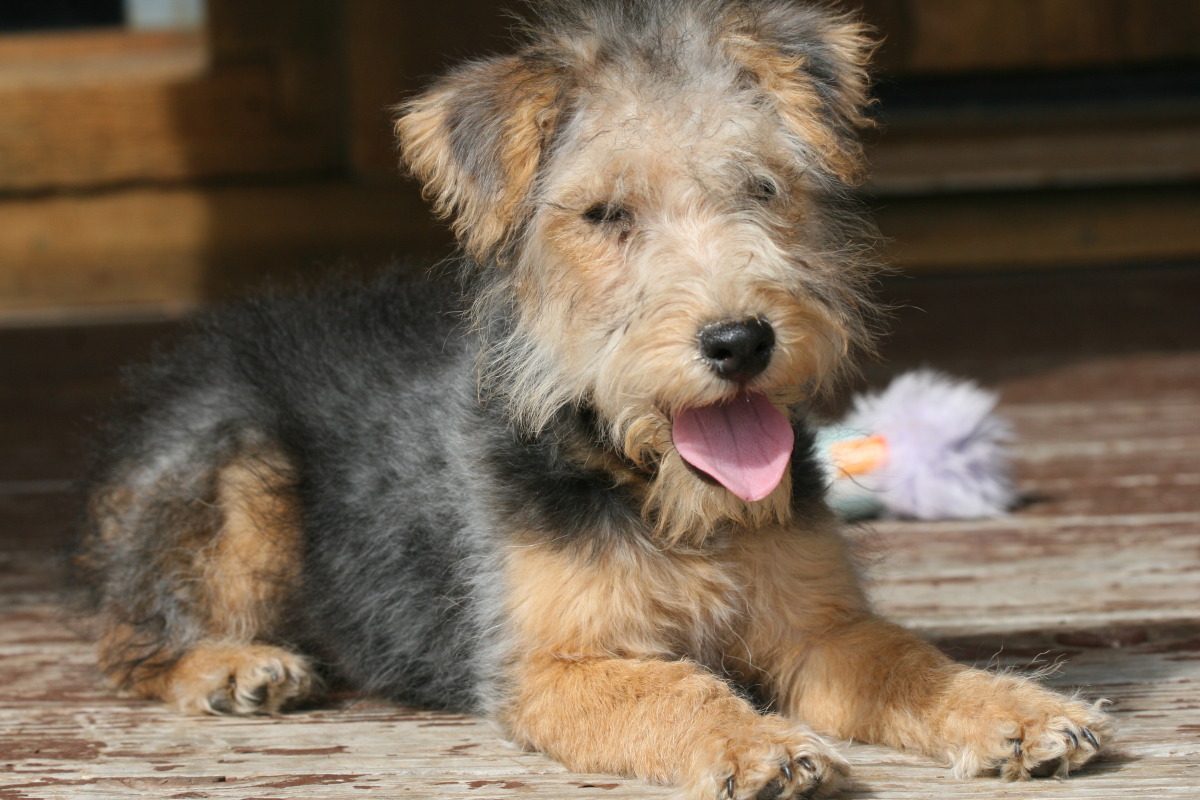
Is the Lakeland Terrier Right For You?
The Lakeland is bold, friendly and confident but has a quiet disposition. While he is well suited for a variety of living situations including rural and urban settings, the Lakeland’s energy level makes him well suited for an active lifestyle. His coat shed minimally but requires periodic clipping by a groomer. If you are considering purchasing a Lakeland Terrier puppy, learn more. *Terrier Group; AKC recognized in 1934.
*Ideal size approximately 14½ inches tall at the shoulder and 17 pounds.
*Vermin hunter.
In 5 Words
- Bold
- Trainable
- Friendly
- Confident
- Independent
Characteristics
Learn About the Lakeland Terrier
Description
The Lakeland Terrier was bred to hunt vermin in the rugged shale mountains of the Lake District of northern England. He is a small, workmanlike dog of square, sturdy build. His body is deep and relatively narrow, which allows him to squeeze into rocky dens. He has sufficient length of leg under him to cover rough ground easily. His neck is long, leading smoothly into high withers and a short topline ending in a high tail set. His attitude is gay, friendly, and self-confident, but not overly aggressive. He is alert and ready to go. His movement is lithe and graceful, with a straight-ahead, free stride of good length. His head is rectangular, jaws are powerful, and ears are V-shaped. A dense, wiry coat is finished off with longer furnishings on muzzle and legs.
Short History of the Lakeland
The Lakeland Terrier breed dates back to the 1800s and is one of the oldest terrier breeds that is still around today. The breed was originally called the Patterdale Terrier, however it is a separate breed from the Patterdale Terrier that we know of today. The Lakeland was developed by crossing the Bedlington Terrier, with the Old English Wirehaired Terrier in the Lake District of England. The dog was used to prevent fox and other vermin from destroying the crops and herds. It hunted den animals such as badger, fox and otter. It was able to hunt on uneven terrain, woods, fields and water. It chased and killed the quarry. The Lakeland was recognized as a breed in 1921 and by the AKC in 1934. It is still used for hunting, as a companion and as a show dog. Some of the Lakeland Terrier’s talents include: hunting, tracking and watchdog
Temperament
Robust, hardy and healthy, with a liking for people and especially tolerant of children, in many ways the Lakeland Terrier is an ideal dog, however, as much as they can live with other pets, they cannot always be trusted with dogs of the same sex, especially another terrier with a typical ‘small dog attitude’ to life! They respond well to consistent and firm training. A dependable and patient leader is a must for the gutsy temperament of this dog. Though relatively small, they are active dogs with a lot of stamina and they love to race round, run and play. Due to the nature of the job for which they were bred, Lakeland Terriers must not be left unsupervised in a badly fenced garden, off the lead or in an unsafe area as any nook, cranny or gap will be explored and squeezed through at the earliest opportunity. They are also prolific and determined diggers – gardeners beware! They can walk all day, in all weathers, but many have adopted the liking for fireside living if the weather is very rainy or bad.
Caring for Your Lakeland Terrier
General Health
The Lakeland Terrier is generally a hardy breed. It is prone to some health issues like Renal atrophy, Ear and skin infections etc.
Grooming & Bathing
The Lakeland Terrier should have its coat plucked two or three times each year by pulling the old hair out by hand. Remove loose hair also from the ear passages and trim excess hair between the pads of the feet. The coat of show dogs will require more intensive grooming. This breed sheds little to no hair.
Exercise & Training
This dog needs to be taken on a daily, brisk, long walk, jog or run alongside you when you bicycle. While out on the walk the dog must be made to heel beside or behind the person holding the lead, as in a dog’s mind the leader leads the way, and that leader needs to be the human. In addition, it will enjoy running and playing off the leash at regular intervals in a safe area. The Lakeland Terrier is certainly suitable for sports activities such as catch and agility skills.

